Abstract
Muschel, Louis H. (University of Minnesota, Minneapolis), and Karen Schmoker. Activity of mitomycin C, other antibiotics, and serum against lysogenic bacteria. J. Bacteriol. 92:967–971. 1966.—Lysogenic bacteria were found to be more sensitive to the bactericidal action of mitomycin C or streptonigrin than the corresponding sensitive or indicator strains. This result may be attributed to the induction of phage production in lysogenic cells by these antibiotics. Lysogenic and sensitive bacteria were, however, equally sensitive to chloramphenicol, streptomycin, and polymyxin B. In contrast to their greater sensitivity to certain phage-inducing antibiotics, the lysogenic state resulted in greater resistance to the bactericidal reaction of serum mediated by the complement system. In general, therefore, the lysogenic state may result in either decreased or increased sensitivity to various antimicrobial agents.
Full text
PDF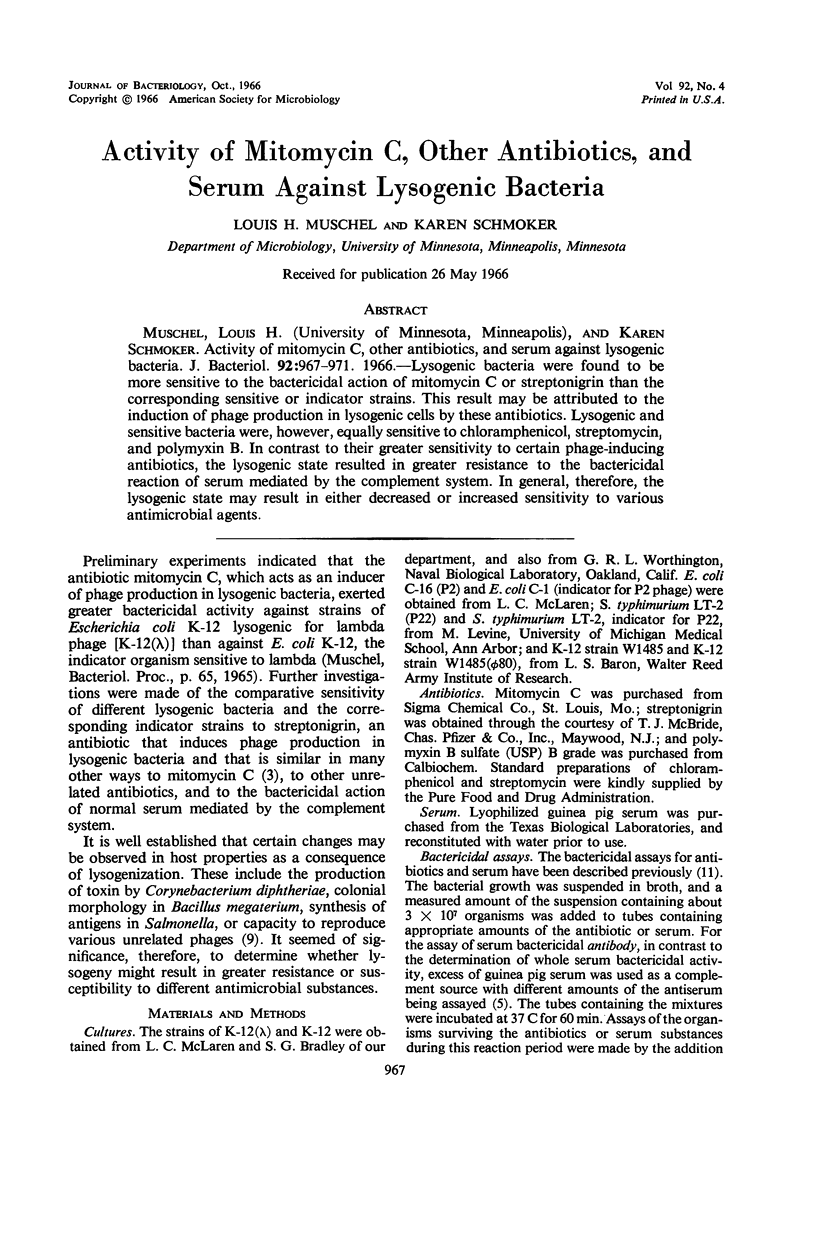
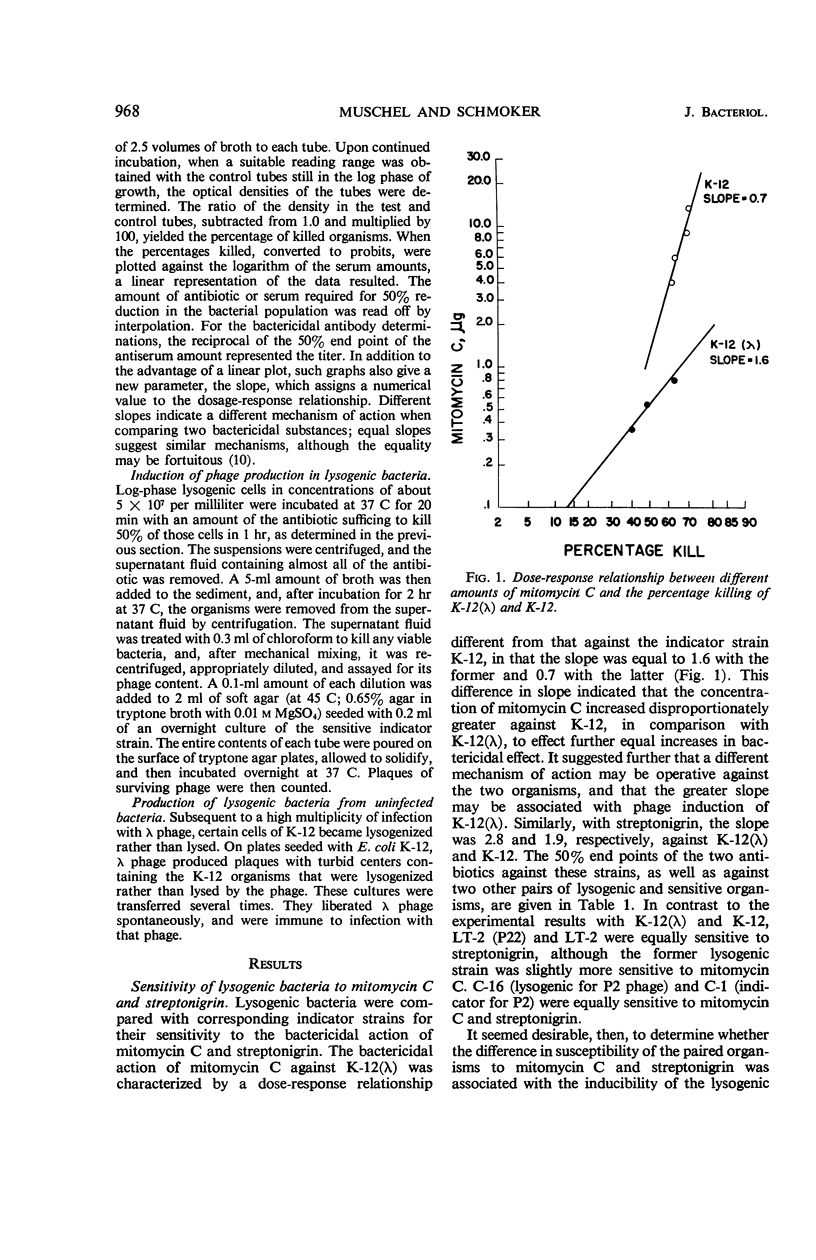
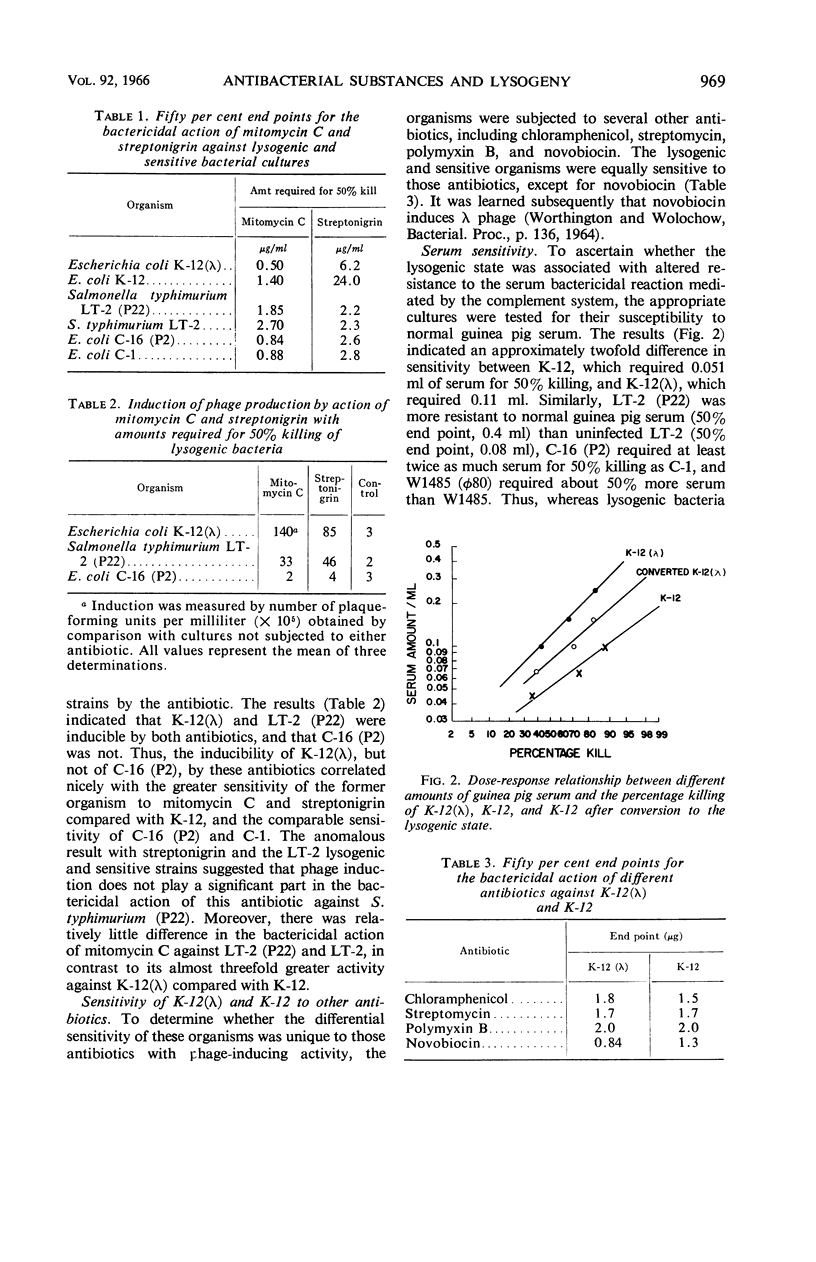
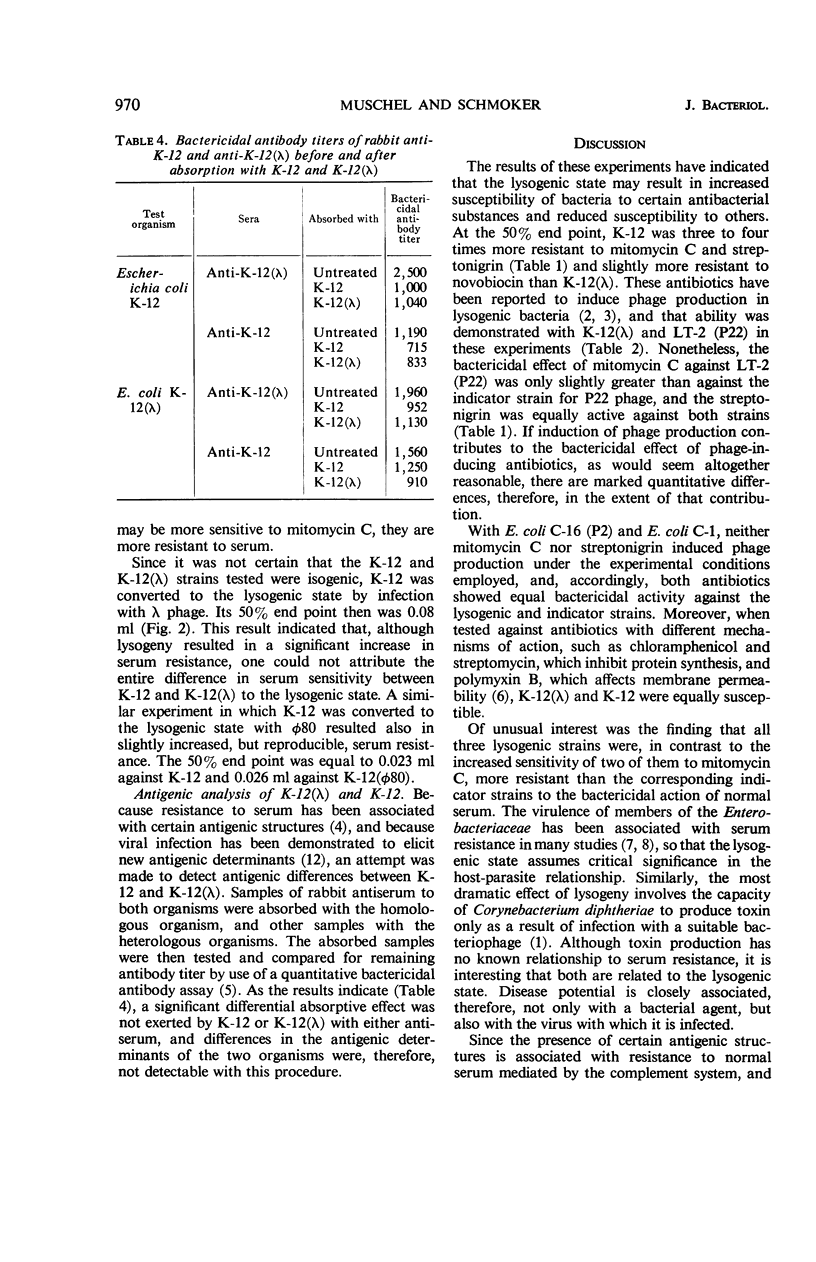
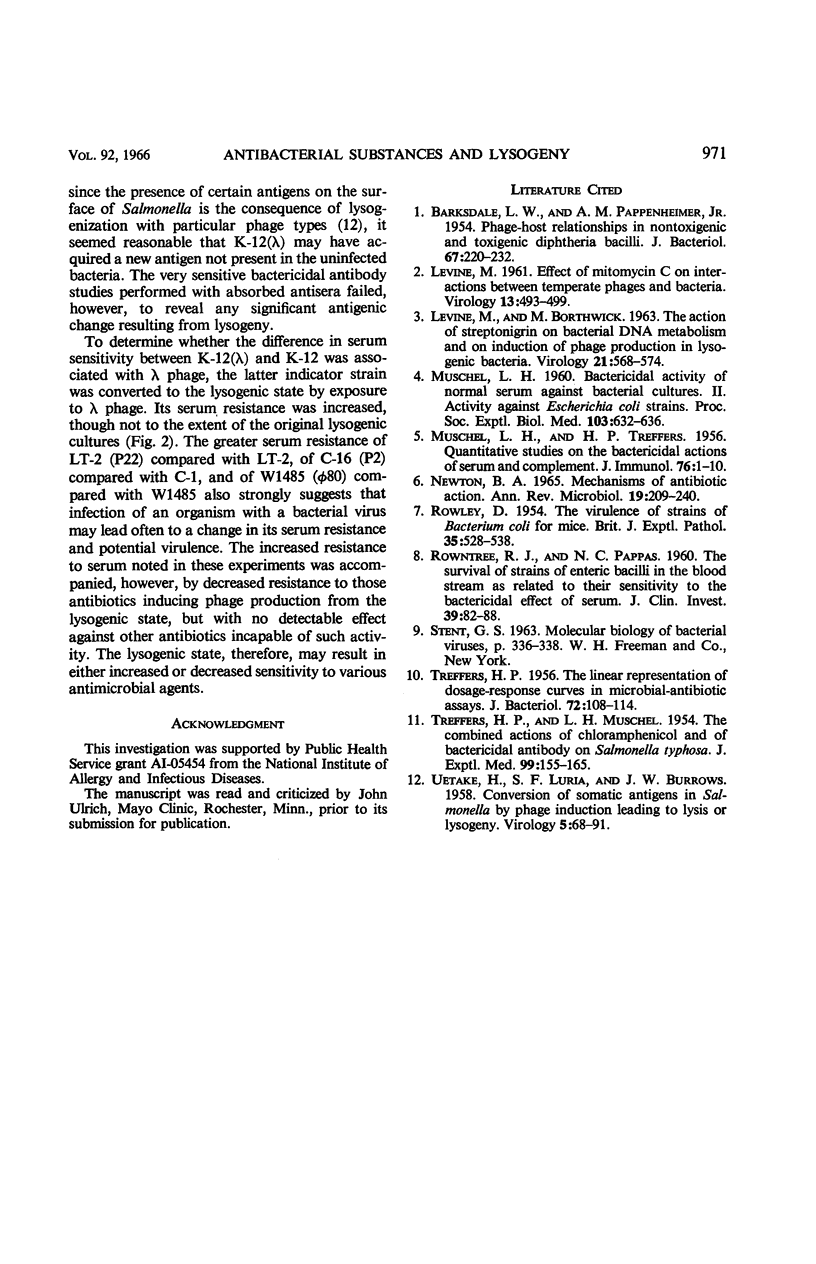
Selected References
These references are in PubMed. This may not be the complete list of references from this article.
- BARDSDALE W. L., PAPPENHEIMER A. M., Jr Phage-host relationships in nontoxigenic and toxigenic diphtheria bacilli. J Bacteriol. 1954 Feb;67(2):220–232. doi: 10.1128/jb.67.2.220-232.1954. [DOI] [PMC free article] [PubMed] [Google Scholar]
- LEVINE M., BORTHWICK M. THE ACTION OF STREPTONIGRIN ON BACTERIAL DNA METABOLISM AND ON INDUCTION OF PHAGE PRODUCTION IN LYSOGENIC BACTERIA. Virology. 1963 Dec;21:568–574. doi: 10.1016/0042-6822(63)90228-9. [DOI] [PubMed] [Google Scholar]
- LEVINE M. Effect of mitomycin C on interactions between temperate phages and bacteria. Virology. 1961 Apr;13:493–499. doi: 10.1016/0042-6822(61)90280-x. [DOI] [PubMed] [Google Scholar]
- MUSCHEL L. H. Bactericidal activity of normal serum against bacterial cultures. II. Activity against Eschericha coli strains. Proc Soc Exp Biol Med. 1960 Mar;103:632–636. doi: 10.3181/00379727-103-25619. [DOI] [PubMed] [Google Scholar]
- MUSCHEL L. H., TREFFERS H. P. Quantitative studies on the bactericidal actions of serum and complement. I. A rapid photometric growth assay for bactericidal activity. J Immunol. 1956 Jan;76(1):1–10. [PubMed] [Google Scholar]
- Newton B. A. Mechanisms of antibiotic action. Annu Rev Microbiol. 1965;19:209–240. doi: 10.1146/annurev.mi.19.100165.001233. [DOI] [PubMed] [Google Scholar]
- ROANTREE R. J., PAPPAS N. C. The survival of strains of enteric bacilli in the blood stream as related to their sensitivity to the bactericidal effect of serum. J Clin Invest. 1960 Jan;39:82–88. doi: 10.1172/JCI104031. [DOI] [PMC free article] [PubMed] [Google Scholar]
- ROWLEY D. The virulence of strains of Bacterium coli for mice. Br J Exp Pathol. 1954 Dec;35(6):528–538. [PMC free article] [PubMed] [Google Scholar]
- TREFFERS H. P., MUSCHEL L. H. The combined actions of chloramphenicol and of bactericidal antibody plus complement on Salmonella typhosa. J Exp Med. 1954 Feb;99(2):155–165. doi: 10.1084/jem.99.2.155. [DOI] [PMC free article] [PubMed] [Google Scholar]
- TREFFERS H. P. The linear representation of dosage-response curves in microbial-antibiotic assays. J Bacteriol. 1956 Jul;72(1):108–114. doi: 10.1128/jb.72.1.108-114.1956. [DOI] [PMC free article] [PubMed] [Google Scholar]
- UETAKE H., LURIA S. E., BURROUS J. W. Conversion of somatic antigens in Salmonella by phage infection leading to lysis or lysogeny. Virology. 1958 Feb;5(1):68–91. doi: 10.1016/0042-6822(58)90006-0. [DOI] [PubMed] [Google Scholar]


